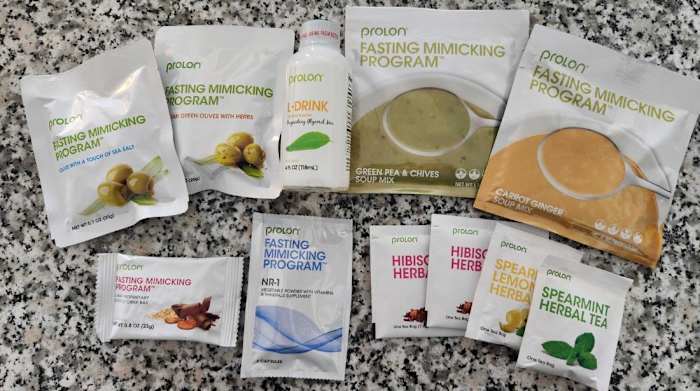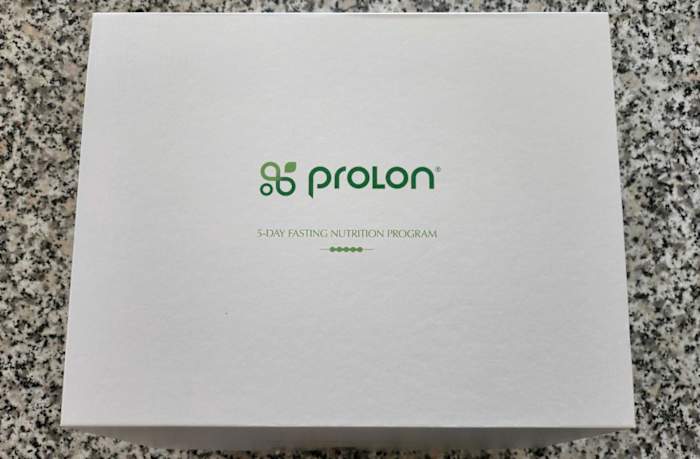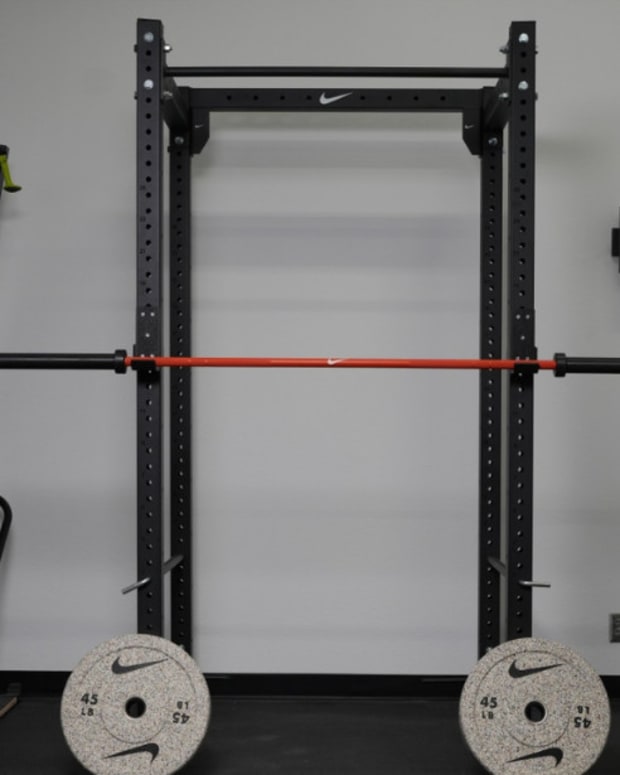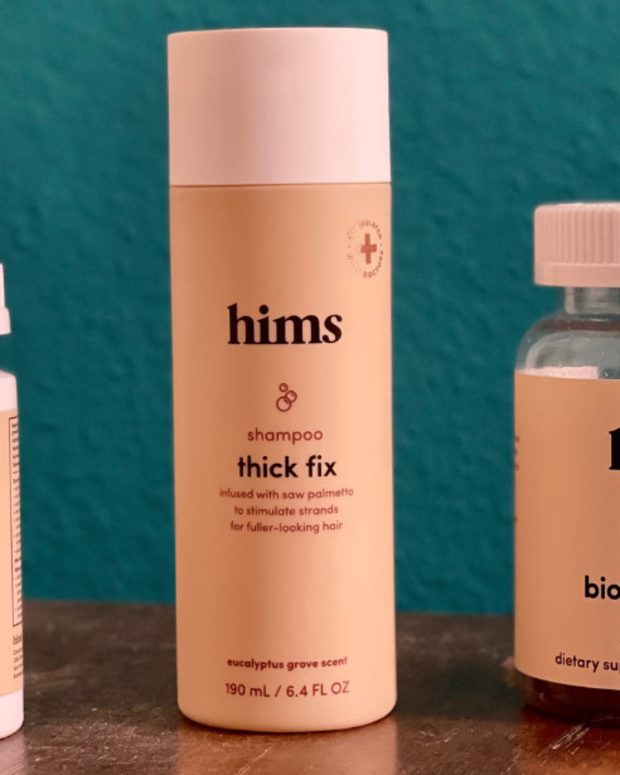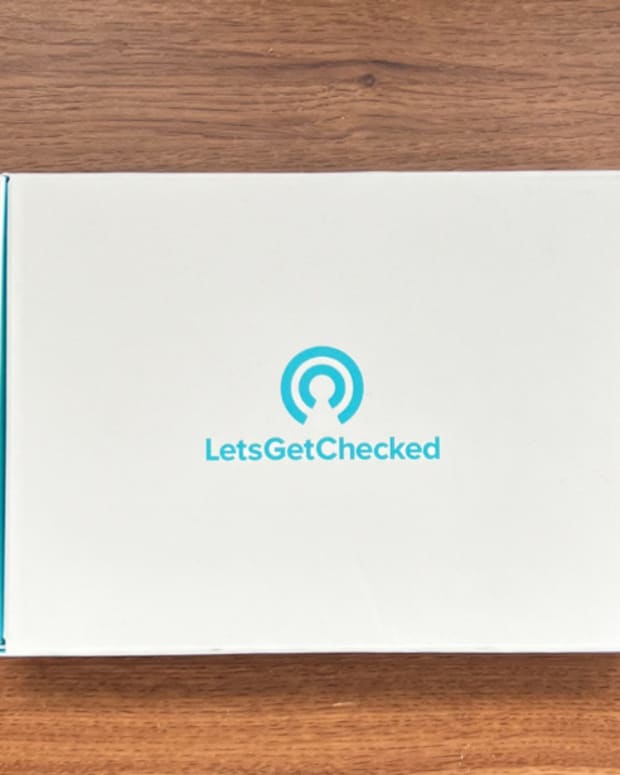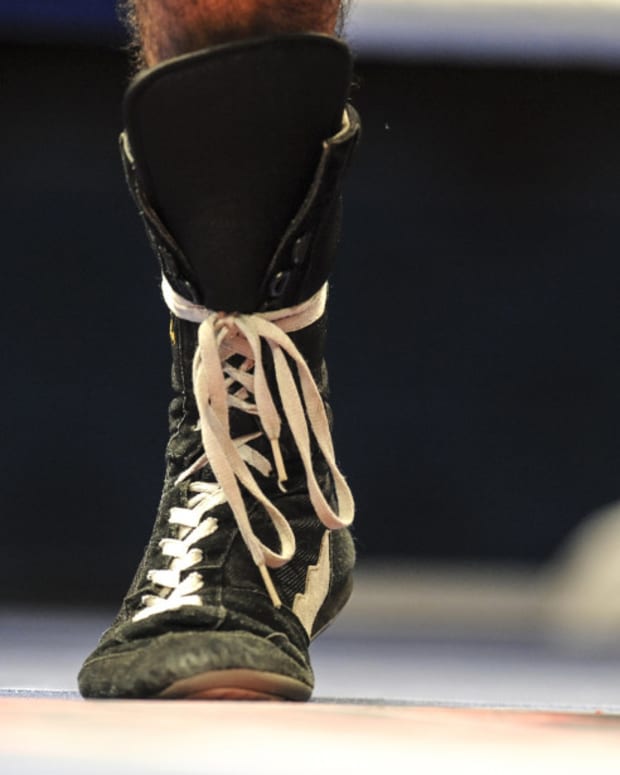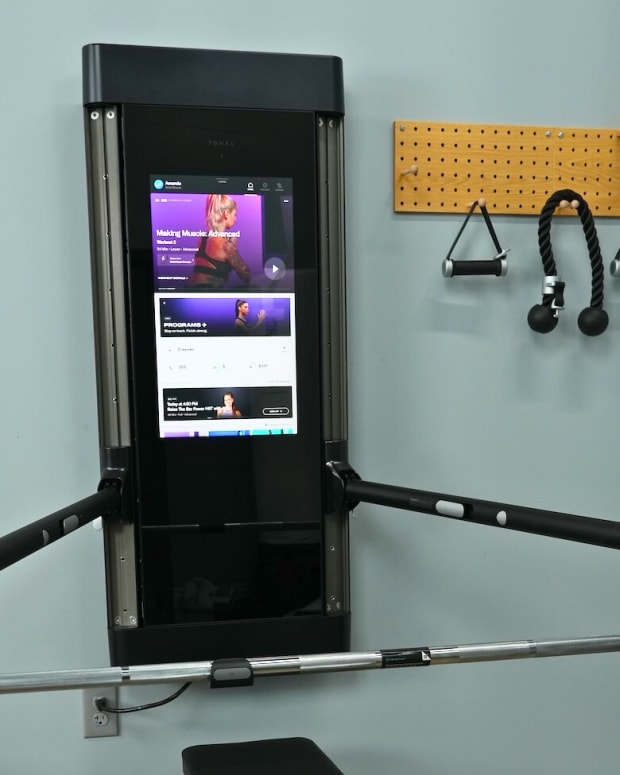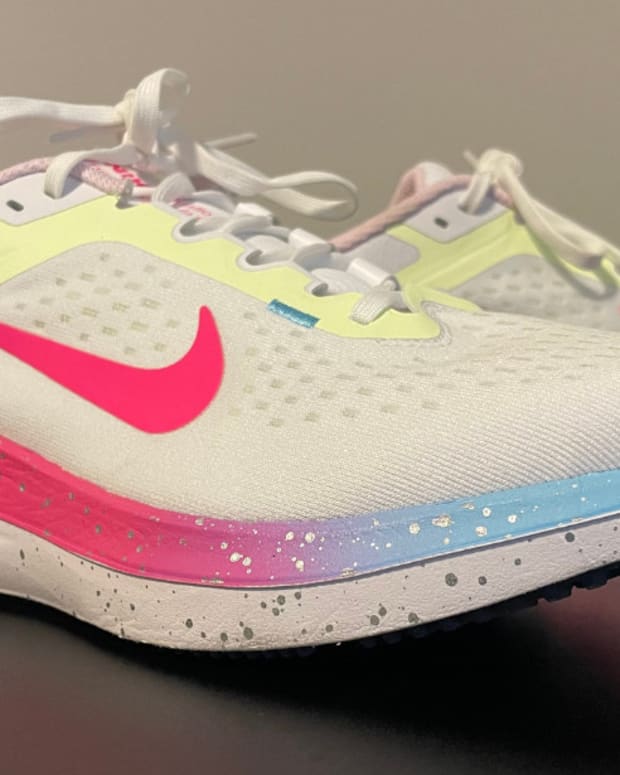The products featured in this article have been independently reviewed. When you buy something through the retail links on this page, we may earn commission at no cost to you, the reader. Sports Illustrated editorial staff are not involved in the creation of this content. Learn more here.
Fasting, which is the act of giving up food for a predetermined amount of time, is a practice that has been around since the inception of human civilization. Beyond its role in various cultural and religious traditions, fasting has emerged as a scientifically backed method to elicit potential health benefits. From metabolic improvements to cellular rejuvenation and possibly even improved cognitive function, the advantages of fasting may extend beyond mere weight management.
However, there is a major problem associated with fasting: It’s extremely difficult to do. This is why Valter Longo, Ph.D., a specialist in biochemistry at the University of Southern California, developed ProLon, a fasting-mimicking diet plan that provides the benefits of fasting while still allowing you to consume food.
With ProLon, you get everything you need for your five-day fast in a pre-packaged shipment. Following the diet plan is foolproof, as each kit comes with five boxes which are labeled by the day so you know exactly what you’re allowed to eat. Examples of the food and drinks include soups, nut bars, snacks, supplements, herbal teas and more. Read on to hear all about our firsthand experience using this product.
This content is meant to be informative, but should not be taken as medical advice. It is not intended for use as diagnosis, prevention or treatment of health problems. Always speak with your doctor before starting any new supplement or exercise regimen.
ProLon Diet At a Glance
- ProLon is a structured five-day dietary program designed to provide the benefits of fasting without having to completely abstain from food
- The diet plan centers around significant caloric restriction and plant-based nutrition
- ProLon comes with everything you need for your five-day fast, including soups, nut bars, snacks, supplements, the L-drink, herbal teas and an easy-to-read meal guide
What Is the ProLon Diet?
ProLon, short for prolonged fasting, is built around the concept of a “fasting-mimicking diet” (FMD), which seeks to replicate the physiological effects of fasting, without requiring total food deprivation. The program spans five consecutive days and provides participants with a meticulously designed regimen of plant-based soups, nut bars, herbal teas and supplements to nourish the body. These foods supply the essential nutrients your body needs while still restricting your total daily caloric intake, typically to between 700 to 1,100 calories.
The core principle behind ProLon is to stimulate a state of temporary ketosis, where the body shifts from relying on glucose to utilizing stored fat for energy. This shift is believed to activate processes such as autophagy, which is a cellular recycling mechanism that triggers beneficial metabolic changes within the body. Autophagy is like housekeeping for the body in which cells break down and either get rid of or recycle their parts to help stay healthy and make room for new cells. This is cell turnover. These potential health benefits range from healthy weight management and improved metabolic health, to reduced inflammation. For the best results, ProLon recommends using its program two to three times per year, however, the brand advises waiting three to four months in between five-day cycles.
ProLon Diet Pros
- ProLon provides a structured program that’s easy to follow.
- Pre-portioned meals make it simple for individuals to adhere to the program.
- ProLon is associated with numerous health benefits including healthy weight management and improved metabolic health.
- Backed by science
ProLon Diet Cons
- A five-day fast is extreme and may be difficult to accomplish.
- Individuals may experience side effects, such as fatigue, headaches, irritability and difficulty concentrating.
- It is best that anyone doing the ProLon fast does not exercise. For athletes, this should only be done in the off-season when an athlete is not working toward off-season goals. Since athletes' needs are typically higher than the average person, athletes should check with their doctor and registered dietitian before doing ProLon.
- ProLon is priced at $190 dollars for the five-day kit, which is relatively expensive.
- Fasting may trigger disordered eating habits in some and should not be done by those recovering from an eating disorder or those struggling with disordered eating.
How Does the ProLon Diet Work?
The fundamentals of the ProLon diet come down to restricting your calories and strictly controlling your nutrient intake. The goal of this is to induce a state of autophagy to help cell turnover. This is accomplished by offering a structured approach to fasting, making it more accessible for individuals seeking potential health benefits, without the challenges of planning and designing their own fasting program. Where ProLon differs is that this diet still allows you to consume some food while keeping your body in a fasted state. This is mentally much easier than a standard water fast in which you completely abstain from eating any food.
However, it's not ideal for everyone. “ProLon, just like traditional fasting, is thought to help cell turnover, reduce the risk of disease, slow the aging process and improve metabolic functions by reducing the levels and activity of three metabolic pathways: mTOR, IGF-1 and PKA, all of which are proteins that influence cell function, growth, development and division," says registered dietitian nutritionist Sarah Wenig. "Over-activation of these pathways is thought to be linked to various health issues and diseases, like cancer, autoimmune disease and metabolic disorders. However, while slowing down or shutting off their activity may be beneficial for some people, this under-activation may be harmful for others.”
As far as the actual meal plan is concerned, ProLon makes it as simple as possible for the consumer. The fasting kit is divided into five individual boxes that contain the exact foods and drinks you’re supposed to consume during each of the five days.
For example, the box labeled “Day One” had:
- 2 - Soup Packets
- 2 - Nut-Based L-Bars
- 2 - Tea Packets
- 1 - Choco Crisp L-Bar
- 1 - Packet of Crackers
- 1 - Packet of Olives
- 2 - Algal Oil Packets
- 2 - NR-1 Supplement Packets
ProLon also includes instructions on how to best divide up your meals.
- For breakfast, the brand recommends consuming the nut-based L-bar, one herbal tea and two algal oil packets
- Lunch consists of soup, crackers, olives and the two NR-1 vitamin and mineral packets
- In the afternoon you can have another nut-based L-bar and an herbal tea
- Lastly, dinner is another packet of soup and a choco crisp L-bar for dessert
As you can see, this is a decent amount of food and definitely will make your fasting experience far more tolerable. It really is as simple as it sounds—you just keep following the meal program.
ProLon limits calories to around 1,000 calories on day one and an average of 700 calories on days two through five. This level of calorie restriction may be harder for those who are more active or have a higher daily calorie and expenditure.
ProLon also includes its own multivitamin to supplement many of the vitamins and minerals that are missing from the diet. Its snacks and soups also include between four to seven grams of fiber each, making the fast relatively high in fiber compared to the amount of food consumed.
Now that you know exactly how the fasting-mimicking diet plan works, let’s talk about what’s actually going on inside your body during the five-day cycle. For this, ProLon includes a helpful chart that describes the metabolic processes and adaptations that are happening inside your body during each of the five days.
Day 1 (Fasting State)
During day one, the body transitions into a fasting state in which your body may shift from using muscle glycogen to stored body fat for energy. It’s worth mentioning that ketosis actually can take up to a week especially if someone isn't working out, since exercise utilizes glucose and will empty stores, Wenig says.
Day 2 (Fat Burning and Ketogenesis)
On day two, the body’s fat-burning potential ramps up, which may contribute to the initiation of ketogenesis. Ketogenesis is a metabolic pathway in the body that produces ketone bodies which are an alternative form of energy for the body.
Day 3 (Autophagy)
Day three is when autophagy, also known as cellular clean-up, can begin. This is the process in which the body gets rid of old and broken parts of our cells, making sure they stay healthy and are able to perform their functions properly.
Day 4 (Cellular Rejuvenation)
During day four, both ketosis and autophagy continue. At this point, the process of fasting has become a positive stressor on your entire body, encouraging damaged cells to continually be recycled to create new ones. Ultimately, this is the metabolic process that is critical for healthy aging and longevity.
Day 5 (Renewal)
Day five is the final day of the ProLon cycle and at this point, your body is in a sustained cycle of autophagy, cellular rejuvenation, cell renewal and ketosis.
Wenig says it may not be guaranteed that users of ProLon will enter ketosis. “Ketosis is where the body produces ketone bodies for energy from the liver through a process called ketogenesis," she says. "This can take anywhere from about two days to upward of one week to start. And for most people, it is necessary to reduce carb intake to a maximum of 50 grams per day. Some people even need as low as 20 grams per day to enter ketosis.”
On the diet, you eat about 100 grams of carbs on day one, or 75 grams of net carbs when subtracting the 25 grams of fiber. On days two through five, you consume roughly 75 grams and about 18 grams of fiber, bringing the number down to 57 grams of net carbs. “This amount of carbs may prevent the body from going into ketosis for some," Wenig says. "However, due to the restriction in calories and protein, having a moderate amount of carbohydrates may still allow the body to enter ketosis after some period of fasting."
At the end of your five-day cycle, ProLon recommends keeping your meals light and small. The brand advises starting with liquid foods, such as soups and fruit juices, followed by light meals including whole grains and small portions of protein. By day seven, you should be able to fully resume your regular diet.
Trying the ProLon Diet
When I received the five day ProLon nutrition program to test out for this article, I was in the middle of an online CrossFit competition qualifier and therefore wasn’t able to commit to a five-day fast. So my wife, Sarah Nastasi, happily agreed to try it out.
Her overall experience with ProLon was generally very positive; she felt that the entire program was well-organized, straightforward and easy to follow. She really appreciated the helpful chart that came in the box that showed you exactly what you were supposed to eat during each meal. In regard to the actual food, she enjoyed the variety of the foods and the soup packets, commenting specifically on the fact that she liked that there was actual food to eat and not just liquids. Having done juice cleanses in the past, she found ProLon much easier to adhere to. When I asked her to rate the food on a scale from one to five she gave it a three, she noted that while they tasted fine, all the food was fairly bland. That being said, she did add some of the ProLon-approved dried herbs and spices, specifically black pepper and oregano, to her soups and said that this helped enhance the flavor.
In the notes that she took throughout the process, she mentions that the first day was by far the hardest, hunger-wise, and that by four p.m. on the first day, she was extremely hungry. She also notes that the first day was physically the hardest because her stomach did feel a little “crampy.” She went to bed early the first night and didn’t have any trouble falling asleep.
When she woke up on day two, she hopped on the scale and was already down three pounds. She began to feel the caffeine detox setting in, and had a dull headache for most of the day. While ProLon does allow a little caffeine, the brand wants you to limit it to under 140 milligrams per day. Sarah chose to abstain from coffee completely. Although still hungry, she mentioned that day two felt slightly better than day one.
Wenig weighs in on Sarah Nastasi’s weight loss: “The three pounds Sarah lost in one day is due to water weight. Even though she was drinking plenty of water and getting liquids with her soups, the food we eat holds water. For example, one gram of carbohydrates holds roughly three to four grams of water. So it makes sense that reducing carb intake would quickly result in losing water weight.”
Moving on to day three, Nastasi found this day to be the easiest. She said that hunger levels were easier to manage; however, during the evening time she began experiencing slight lower back pain and her legs were a little achy. By day four, this back pain was really starting to bother Sarah and we believe that this was possibly caused by an electrolyte imbalance. While ProLon does encourage you to drink at least 28 to 32 ounces of water per day, Sarah noted that she was consuming closer to 80 ounces and maybe this flushed a lot of the electrolytes from her system. The pain worsened throughout the day, and she began to feel dizzy that evening. While laying in bed watching TV that night, she briefly passed out. I had her consume electrolytes—two whole Gatorades which she drank in about two minutes—and she said she began feeling exponentially better. Regardless, she called it quits that night to be on the safe side.
“Muscle pain during a fast is most likely due to dehydration," Wenig says. "ProLon includes sodium in its products, but during a fast, the body is restricted from important electrolytes like magnesium and potassium that contribute to muscle health and help prevent cramping. While ProLon’s products have some potassium in them, this is not enough to meet daily requirements. And although ProLon includes a very small amount of magnesium in its multivitamin, these are only taken on days one and two, and again, do not meet the body’s minimum needs."
In Sarah's final testing notes, she wrote down what she ate on day five, which included a banana, a sweet potato and a can of Progresso chicken noodle soup. She also wrote that she didn’t truly get her full appetite back for around three days.
That's fairly normal, Wenig says. “When going on a fast, or even a diet in which you consume less calories than normal, the body adapts and slows down your metabolism. As a result, your appetite will slow too,” she says.
Although Sarah Nastasi lost weight while doing the ProLon diet, it’s likely that most of the weight loss is water weight and not fat loss, Wenig says. “It takes a deficit or surplus of roughly 3,500 calories to lose or gain one pound of fat. Also, in order to conserve muscle mass, protein intake must be high (think of eating at least 70 percent of your bodyweight in grams of protein per day). On ProLon, the daily protein intake is roughly 22 grams on day one and an average of 16 grams across days two through five. For context, the recommended dietary allowance (RDA) for protein is 0.8 grams per kilogram of bodyweight (take your weight in pounds and divide by 2.2 to get your weight in kilograms). This is the minimum amount of protein someone who is not active should consume per day in order to not be deficient in protein.”
Tips for Success
- Use the ProLon website as a resource and take advantage of the tips they have available to get through the entire five-day cycle.
- Go to bed early and prioritize resting and sleeping, also be sure to limit your physical activity. "While I did walk daily, I kept it under a mile and didn’t do my usual CrossFit workouts," Nastasi says.
- When you feel hungry, do your best to be productive. "I cleaned out closets, organized the kitchen, went for walks, etc."
- Put the entire experience into perspective. Yes, it’s challenging and takes mental strength, but keep thinking about the big picture and how it’s only five days.
- Definitely don’t start ProLon on a whim or during a week when you have a lot of social engagements. This is something that you should definitely plan for and have a specific week chosen where you don’t have a lot going on.
Sarah Nastasi’s Pros and Cons
Pros:
- Very clear directions and extremely easy-to-follow
- Lots of varying flavors with the combination of soups, crackers, teas, olives and L-drink
- Dropped five pounds over the course of the first three days of the program
- The ProLon website is a great resource to use if you have any questions concerning the program
Cons:
- Five days is simply a long time to fast, you really can’t go about life normally. "I felt depleted, both mentally and physically, so even doing routine tasks at work felt difficult," Nastasi says.
- If you don’t like olives then you’re out of luck, there are a lot throughout the week
- Nuts are also very prevalent so if you have a nut allergy then this program is likely not for you
“Overall, ProLon was a lot easier than I anticipated up until the back pain," Nastasi says. "Obviously I was hungry, but the way the program was structured really did make the whole fasting process very easy.” Despite having to stop early, she did say that she would give it another go in the future, especially now that she knows exactly what to expect.
ProLon Cost
A one-time order of the five-day ProLon nutrition program is priced at $190, which equates to $38 dollars per day. While this definitely isn’t cheap, you should consider that you won’t need to purchase any groceries for the week, which may change your perspective. That being said, I do think that this is a fair cost for the service that ProLon provides. The curated meal plan is well thought-out, the structured program is easy to follow and the entire process is backed by science.
What Customers Are Saying About ProLon
The customer reviews on the ProLon website are generally very positive. Many of the reviews comment on how well-structured and easy-to-follow the program is and how it helped certain users develop a more mindful relationship with food.
One review from the ProLon website reads, “ProLon changed my life. I saw significant results on day three of the five-day program. It teaches you how to eat and more importantly how you are supposed to feel when you are eating healthy. It has inspired me to continue with this journey towards maintaining my health and well-being.”
However, I also found reviews on both Amazon and TrustPilot and both of these sites had ProLon rated 3.8 out of 5 stars. While these are still pretty solid ratings, especially considering how extreme of a diet intervention ProLon is, the main concerns were around the flavors of the soups and disappointing results when it came to weight loss.
One of the reviews from TrustPilot reads, “This was my third ProLon fast, I find the program effective, particularly for kicking off a period of keto eating/intermittent fasting to control weight/waist circumference and maintain metabolic health. But, I can't say I enjoy the food. I don't like the taste of the nut bars, and the soups are just ok and definitely tedious after five days. I will probably do it again but the fact that I don't enjoy the food makes it more of a chore than a healthy practice I look forward to.”
In the end, I think it’s important to remember why you are doing the ProLon fasting diet program in the first place. While there were generally mixed reviews in regards to the taste of the food, people's palates are very different and while I’m sure ProLon does its best to make the food taste as good as possible, its purpose is to nourish you rather than taste delicious. Another important note is that the purpose of ProLon is to trigger cellular rejuvenation, and while weight loss may occur, it shouldn’t be your primary reason for purchasing ProLon.
ProLon vs. Intermittent Fasting
ProLon and intermittent fasting are two dietary approaches that share a common goal of harnessing the potential health benefits of fasting. As far as the best diets go, ProLon and intermittent fasting can both be useful for those looking to restrict their caloric intake without too much thought or hassle. That being said, they differ significantly in their methods and actual structure.
ProLon is a five-day, fasting-mimicking diet program that’s specifically designed to provide your body with the essential nutrients it needs while maintaining a fasted state. It offers a structured plan that comes with pre-packaged foods, including plant-based soups, nut bars, herbal teas, supplements and more. ProLon is often chosen for its convenience and simplicity and the potential benefits include healthy weight management, metabolic health improvements and the activation of cellular repair processes like autophagy. In essence, it’s a short-term dietary intervention.
On the other hand, intermittent fasting (IF) is a more flexible and adaptable dietary approach to fasting. IF involves cycling between periods of eating and fasting, with various methods available. The most popular IF time frames include the 16/8 (16 hours of fasting with an eight hour eating window), the 5:2 (eating normally for five days and fasting for two days), and the every other day method (one day of eating followed by one day of fasting). As you can see, intermittent fasting is far less structured than ProLon and allows for more individual customization. Unlike ProLon, IF can be sustained over the long term and even be fully incorporated into an individual’s lifestyle as a sustainable way to manage weight and improve insulin sensitivity. Meal replacement shakes can make IF slightly easier if you want to have a quick and easy meal on hand for when your fasting window ends.
The choice between ProLon and intermittent fasting ultimately depends on your individual dietary preferences, goals and willingness to adhere to a specific diet plan. While ProLon offers a convenient, short-term option to promote health and longevity, intermittent fasting provides a more flexible approach but requires a more hands-on approach and careful planning.
Related Article: The 7 Best Intermittent Fasting Apps
ProLon FAQs
What is the daily caloric intake during ProLon?
ProLon states that food consumed on day one of the five-day cycle contains around 1,100 calories. Days two through five are restricted even further and have somewhere between 700 and 800 calories per day.
Does ProLon put you in ketosis?
Yes, the five-day ProLon fast is very low in carbohydrates and will place most individuals into ketosis sometime between the second and third day. A scientific paper in the Journal of Special Operations Medicine states that full-on ketosis, a metabolic state in which the body is predominately using ketones for energy, can be achieved by fasting for longer than 72 hours. The time it takes to go into a state of ketosis will vary from person to person. If you are interested in seeing if your body is truly in ketosis, you can test this with ketone strips that measure ketone output in your urine.
Do you lose fat on ProLon?
While it is important to remember that fat loss is dependent on a number of factors, it is likely that you may lose some stored body fat while on the ProLon five-day fast. This claim is substantiated by a randomized controlled trial in which participants who completed a five-day ProLon cycle lost an average of 2.6 kilograms of body weight, though the study didn’t measure whether the weight loss came from water weight, body mass or muscle mass.
Who should not try ProLon?
While ProLon is suitable for many people, it’s important to note that a five-day fast is considered an extreme diet plan. Therefore, there are individuals who should only use it under close medical supervision or avoid using it altogether. Examples of people who should not try ProLon include:
- Anyone under the age of 18
- Pregnant or nursing women
- Individuals who may be allergic to specific ingredients in the meal plan
- Individuals with certain medical conditions or who are recovering from an illness
- Individuals taking certain medications, especially those that require food intake
- Individuals who already have a low body mass index (BMI)
- People with a history of disordered eating
For anyone planning on using ProLon, we highly recommend speaking with your healthcare professional or a registered dietitian to ensure it is safe and appropriate for your specific health and medical circumstances.
Related Article: The Easiest Diets to Follow
Can you drink coffee while doing Prolon?
ProLon does recommend that you avoid caffeine intake during the five day fasting cycle. However, if caffeine is a must, then ProLon advises consuming less than 140 milligrams of caffeine per day. This is equivalent to approximately one eight-to-12-ounce cup of coffee, two cups of black or green tea, or six cups of decaffeinated coffee.
What is the average weight loss on ProLon?
In a randomized controlled trial published in the Journal of Applied Physiology, participants who completed a five day ProLon cycle lost on average 2.6 kilograms of body weight, which equates to approximately 5.7 pounds. It is worth noting however that this study was done on a relatively small sample size of 24 physically active men. For a real-world reference, Sarah Nastasi made it through three days of a ProLon cycle and lost five pounds, dropping from 145 to 140 pounds.
Takeaway: Is ProLon Worth It?
If you’re serious about improving your metabolic health and longevity, then ProLon may be a worthwhile endeavor. What sets ProLon apart from the countless fad diets, detoxes and cleanses on the market is that it was developed by Valter Longo, PhD, a world-renowned biogerontologist and the head of the Longevity Institute at the University of Southern California. That being said, we still highly recommend consulting with a healthcare professional who can provide you with personalized guidance on whether ProLon is a suitable option for your specific circumstances. In the end, we hope our article helps you understand what to expect from the five day ProLon program and allows you to make an informed decision about whether ProLon is right for you.
These statements have not been evaluated by the Food and Drug Administration. This product is not intended to diagnose, treat, cure, or prevent any diseases.
Prices are accurate and items in stock as of publish time.
